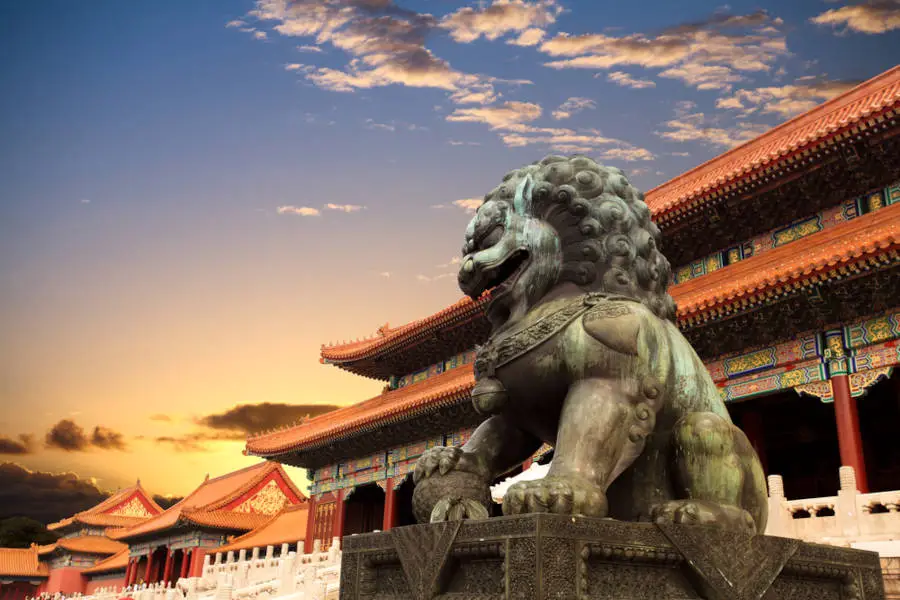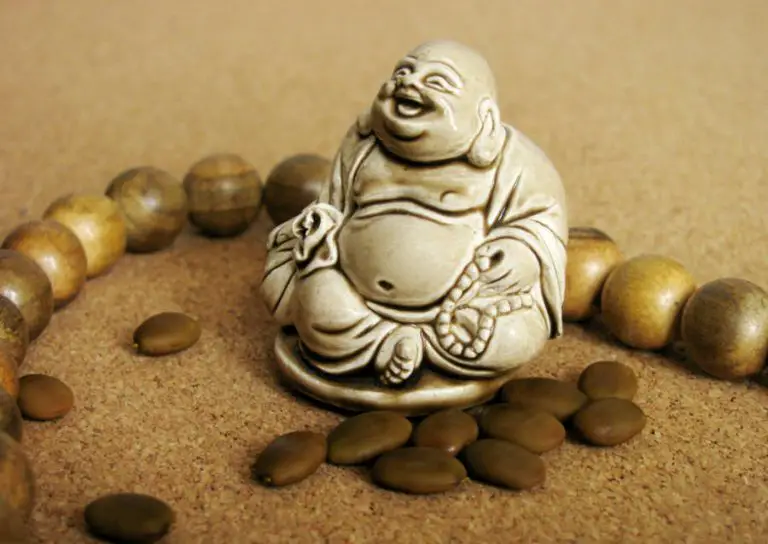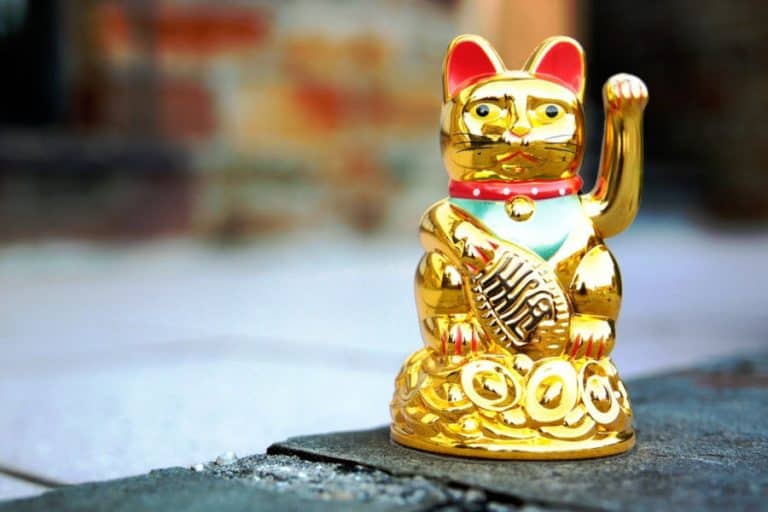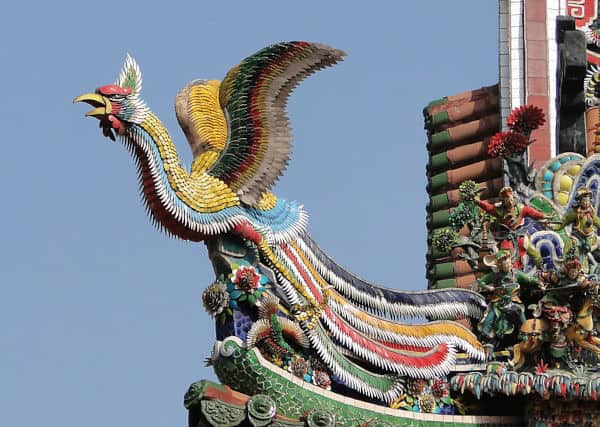Fu Dog the Chinese guardian lion that is also called 石獅shí shī, is a very important symbol in Feng Shui.
Historically the Fu Dog statues were placed in front of temples, government offices, and even imperial palaces in ancient China. However, in today’s Feng Shui applications, the Fu Dog is not only believed to be a protective amulet but is also a symbol of social status and family wealth that is often placed in front of wealthy homes.
For such applications, the Fu Dog statues are typically displayed as a couple: male and female. The male Fu Dog is often depicted as holding a globe under his right paw, symbolizing control and protection over his domain. The female one, on the other hand, typically is holding a cub under her left paw, symbolizing maternal protection.
History of Fu Dogs
A unique thing to notice when discussing the Fu Dog is the fact that it is called a dog’ despite more resembling a lion. The lion is not an indigenous animal in China, and it is believed that travelers from Central Asia (primarily India) brought stories about lions to China, inspiring the creation of Fu Dogs. It is believed that these statues of guardian lions were modeled based on the travelers’ descriptions, drawing inspiration from native dogs in China.
It is said that during the times of the Han Dynasty (206 BC–220 AD), actual lions were first brought into China from Central Asia as tributes. Buddhist Monks from Central Asia relate how lions in Buddhism are the protector of Dharma. In India, statues of lions were and are a common feature seen in both Buddhist and Hindhu palaces and temples.
The ancient Chinese soon adopted this belief and created lion’ statues carved from expensive stones, usually marble or granite. This is where the name Shí shī (石獅), or stone lions’ come from, although there are also ancient Fu Dog statues made of bronze or cast iron.
The Fu Dog statues were initially used to guard the gates of the Imperial Palace, but as families became more prosperous due to the Silk Road trading activities, the use of Fu Dogs was also adopted outside of royal families. This is known as the “Golden Age” in ancient Chinese history due to the increased economic growth, and Fu Dog statues were placed on either side of the home entrance, believed to be the spiritual guards protecting the house from evil energy and also malicious people who might bring along ill intentions into these households.
Besides its primary use as statues, in Feng Shui, the Fu Dogs are also used as pottery, door knockers, amulets, and other applications.
Take a look at these “Fu Dog” designs – Aff.link
Fu Dog in Feng Shui
In its various Feng Shui applications, the Fu Dogs are always displayed in pairs: one male and one female. This is believed to keep the balance of Yin and Yang, with the male and female Fu Dogs complementing each other. It’s important not to place them in separate rooms at all costs.
The male is typically placed on the right side (of the building) and the female on the left side when you look towards the entrance of the building from the outside. So if you are standing inside the house, you should find the male on your left and the female on your right. However, there are applications where the opposite placements occur.
The important thing is to have a male and a female Fu Dogs working together, and the actual placement is not of absolute importance.
Want to learn more about Feng Shui? Take a look at these Courses and Books – Aff.link
Male Fu Dog
The male Fu Dog is typically depicted with its paw on top of a globe ball. It symbolizes the Fu Dog’s control and dominion over the area it resides, and the protection of its realm’ (your household).
- Yang energy
- Protects the exterior of the house (physical elements)
- Believed to represent the world as a whole
- Symbolizes power, strength, and authority
- More raw’ in design, depicting courage
Female Fu Dog
The female Fu Dog is typically depicted with its paw protecting its cub, symbolizing maternal instinct to protect its pup. It is believed that the female Fu Dog will transfer the same material protection and devotion to the home or business it protects.
- Yin energy
- Guards the interior of the house, the spirit/mind of its owner
- Believed to represent the cycle of life
- Signifies nurture, benevolence, and support
- More refined in design, depicting wisdom
Related reading: “Chinese Good Luck Charms To Bring Good Fortune” –Opens in new tab
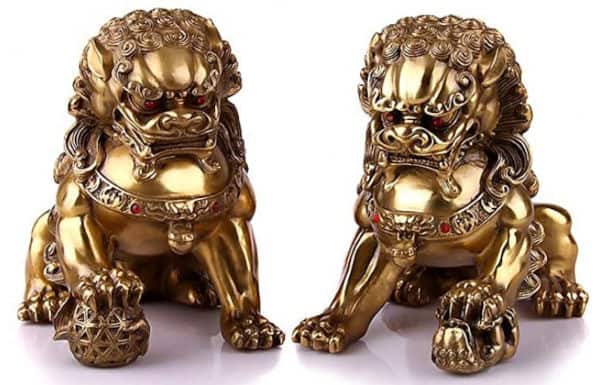
Fu Dog Placement in Feng Shui
Unlike most other Feng Shui charms, the placement of Fu Dogs as Feng Shui cures aren’t typically based on directions. They can be orientated in any direction as long as the pair are placed at both sides of the door, facing outwards.
Thus, it won’t matter whether the door faces north, south, west, or east, the Fu Dogs should always face outwards.
Another common application is to place them indoors as protection for other symbols or monuments inside the house (i.e. a Buddha statue). For this application, they should not be larger than the monuments they are positioned to protect.
The Fu Dogs should be slightly elevated, and most of them are already built on an elevated platform, so this shouldn’t be an issue.
Some other tips:
- Again, the Fu Dogs always need to be placed in a pair, male and female. Or else, it can cause an imbalance of energy for the building or house and can be counterproductive to the initial objective.
- If you are placing the Fu Dogs outside your house entrance (the typical placement), make sure they do not face directly towards your neighbor’s house since they can cause harm to this house.
- When the Fu Dogs are placed indoor, they should always face outside and not the other way around. Fu Dogs facing inside can cause disharmony in the household. Don’t use overly big statues when placing them indoors, and choose ones made of a brass material for indoor use.
- If your house is facing the sharp corner of a building, lamp post, or other objects believed to project negative energy, you can place a pair of Fu Dogs facing this object.
Take a look at these “Fu Dog” designs – Aff.link
Stay in Touch
 Join our newsletter by using the forms on this website or click here!
Join our newsletter by using the forms on this website or click here! Follow us on Google News
Follow us on Google News Follow us on Facebook
Follow us on Facebook
Feature Image from Depositphotos

